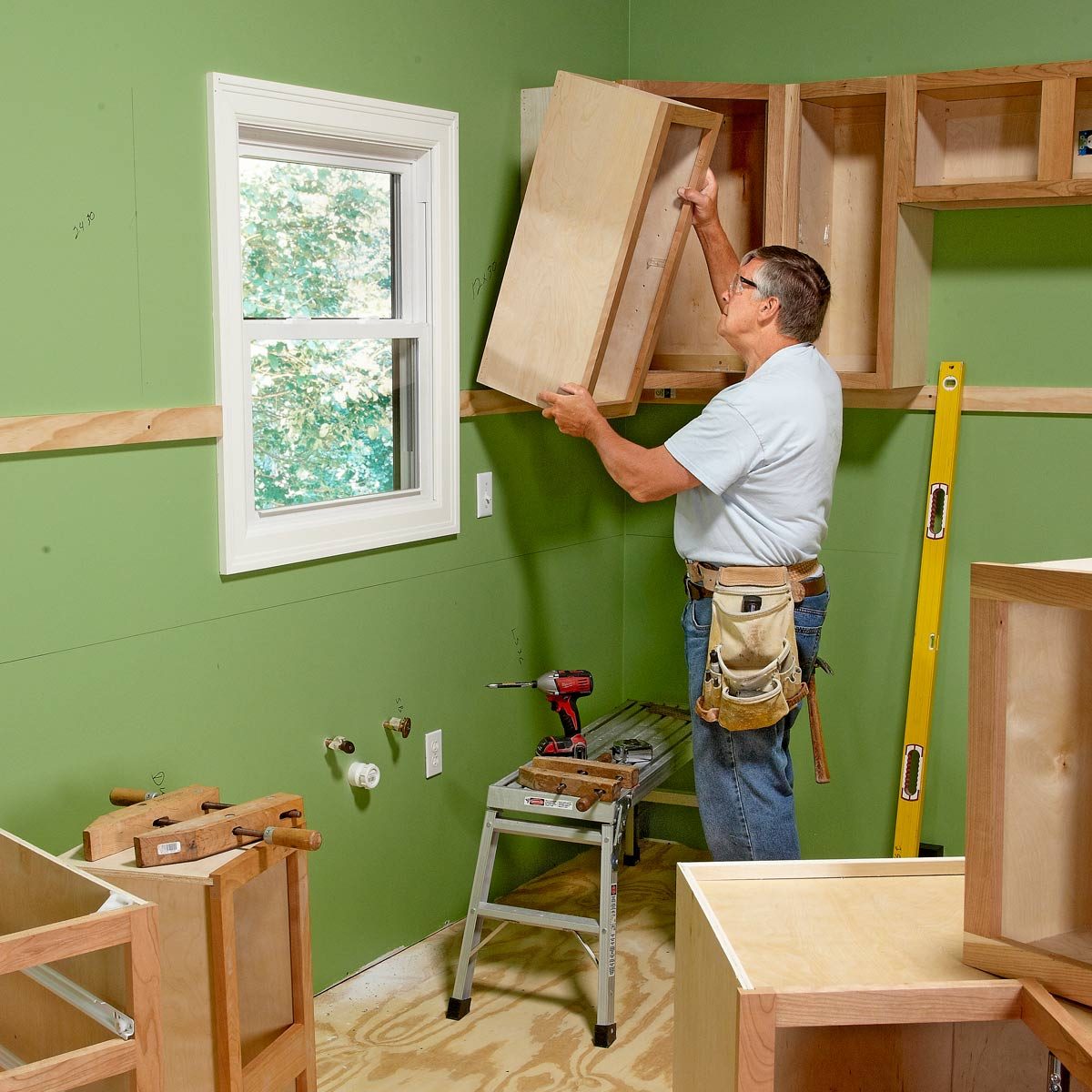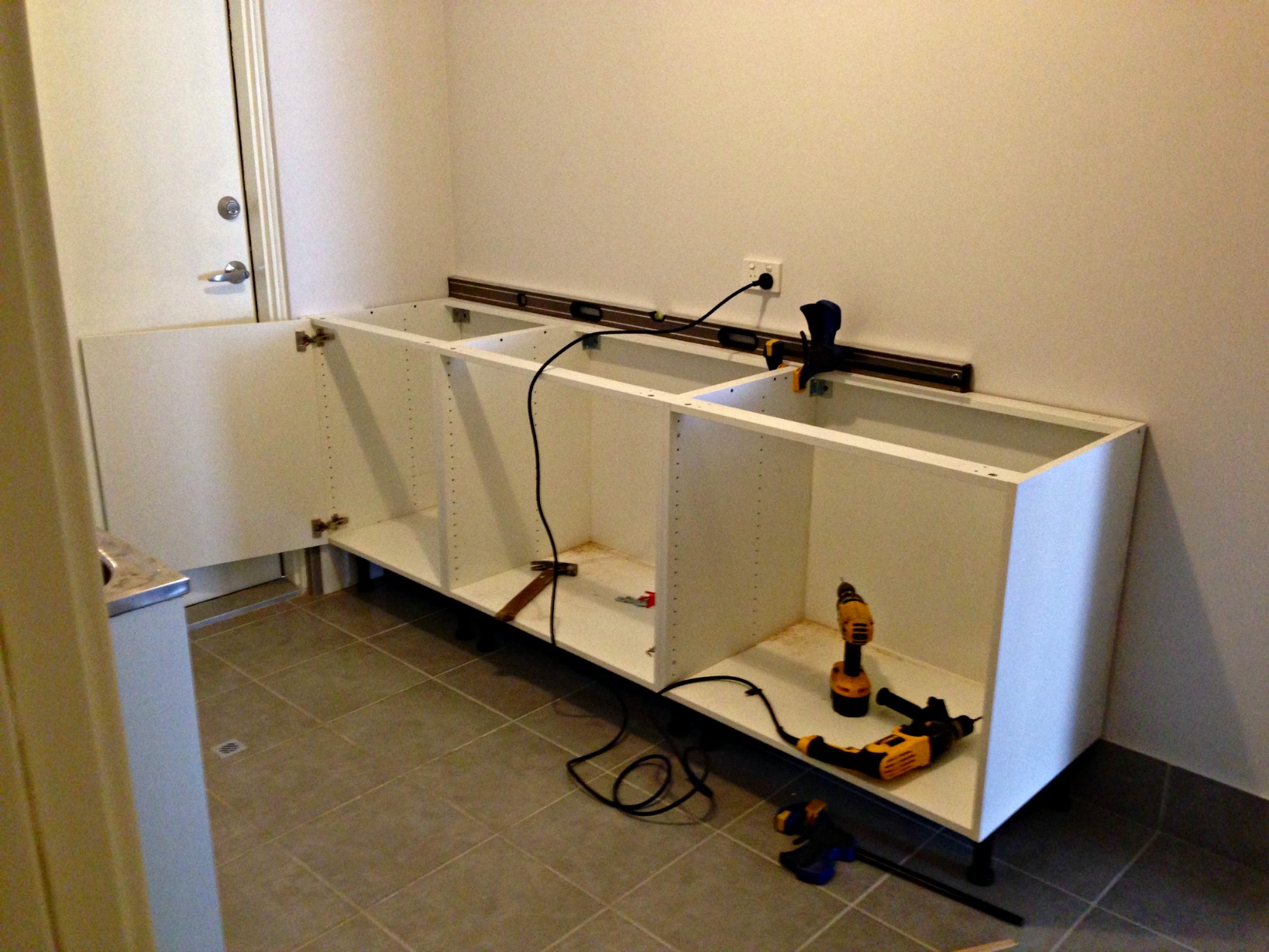Understanding the Basics: How To Fix Cabinet To Wall

Before diving into the nitty-gritty of fixing cabinets to your wall, let’s get acquainted with the essential aspects of this DIY project. This will help you understand the different methods available and choose the best one for your specific needs.
Cabinet Mounting Methods
There are several ways to mount cabinets, each with its own advantages and disadvantages.
- Surface Mounting: This method is the simplest and involves attaching the cabinet directly to the wall using screws. It’s ideal for lighter cabinets and doesn’t require any special tools.
- Floating Mounting: This method allows the cabinet to be suspended slightly off the wall, creating a modern and sleek look. It usually involves using specialized brackets or shelf supports.
- Recessed Mounting: This method involves integrating the cabinet into the wall, creating a seamless look. It’s more complex and requires a deeper understanding of carpentry and construction techniques.
Tools and Materials
The tools and materials you’ll need will depend on the specific cabinet mounting method you choose. However, here are some common essentials:
- Measuring Tape: Accurate measurements are crucial for a successful installation.
- Level: Ensures that your cabinet is perfectly straight and horizontal.
- Pencil: For marking the wall and cabinet.
- Drill: For drilling pilot holes and attaching the cabinet.
- Screwdriver: For securing screws and other fasteners.
- Stud Finder: Helps locate the wall studs, providing a solid anchor for your cabinet.
- Screws: Appropriate size and type depending on the cabinet and wall material.
- Brackets or Supports: If using a floating or recessed mounting method.
- Safety Glasses: Always wear safety glasses to protect your eyes from flying debris.
Preparing the Wall and Cabinet, How to fix cabinet to wall
Before you begin installing your cabinet, it’s crucial to prepare the wall and cabinet properly.
- Clean the Wall: Remove any dirt, dust, or debris from the wall surface to ensure a strong bond between the cabinet and the wall.
- Locate Studs: Use a stud finder to identify the wall studs. These provide the strongest support for your cabinet.
- Mark the Wall: Use a pencil to mark the exact location where you’ll be attaching the cabinet.
- Pre-drill Pilot Holes: Drilling pilot holes in the wall will prevent the wood from splitting when you drive in the screws.
- Check Cabinet Alignment: Before securing the cabinet to the wall, double-check that it’s level and aligned properly.
Fixing Methods

When it comes to securing your cabinet to the wall, you’ve got a few options. The most common method involves using screws and anchors, which offer a robust and reliable solution for most cabinet installations.
Types of Anchors
Choosing the right anchor depends on the type of wall you’re working with. Anchors are designed to provide extra support in materials like drywall or plaster, ensuring your cabinet stays firmly in place.
- Plastic Anchors: These are widely available and cost-effective, making them a popular choice for lighter cabinets. They’re typically used with screws and expand inside the wall for a secure grip. However, they’re not suitable for heavy cabinets or those subject to significant stress.
- Metal Anchors: For heavier cabinets, metal anchors provide superior strength and durability. These come in various shapes and sizes, with some expanding for a tight fit and others featuring wings or threads for added grip. They’re generally suitable for both drywall and concrete walls.
- Toggle Bolts: These are ideal for thicker walls, such as those with multiple layers of drywall. They consist of a threaded bolt with a spring-loaded toggle that expands behind the wall, providing strong support.
Leveling the Cabinet
Once you’ve selected your anchors and screws, it’s crucial to ensure your cabinet is level before securing it. Using a level is essential to prevent the cabinet from tilting or leaning.
- Mark the Wall: Place the cabinet where you want it on the wall and use a pencil to mark the screw locations.
- Use the Level: Hold the level against the top or bottom edge of the cabinet, ensuring it’s parallel to the floor. Adjust the cabinet until the level indicates a straight line.
- Confirm Alignment: Double-check the level from multiple angles to ensure the cabinet is perfectly straight.
Troubleshooting and Tips

Even the most experienced DIYer can encounter challenges during cabinet installation. This section delves into common problems and offers practical solutions to ensure a smooth and successful project.
Identifying Common Problems
Understanding common problems during cabinet installation is crucial for preventing them and ensuring a smooth process. These issues can arise from various factors, including improper measurements, inadequate tools, and even unforeseen structural challenges.
- Uneven Walls: Uneven walls are a common problem that can lead to misaligned cabinets. The unevenness can make it difficult to install cabinets flush against the wall, resulting in gaps or uneven lines.
- Incorrect Measurements: Incorrect measurements can lead to cabinets that are too large or too small for the space. This can result in a poor fit, requiring adjustments that can be challenging and time-consuming.
- Improper Leveling: Leveling is crucial for ensuring that cabinets are installed straight and secure. If cabinets are not level, they can appear tilted or even become unstable over time.
- Inadequate Support: Cabinets require proper support to prevent sagging or collapsing. Insufficient support can occur if the walls are not strong enough or if the cabinet is not properly anchored.
- Difficulty with Hardware: Installing cabinet hardware can be tricky, especially for beginners. Issues with hinges, drawer slides, or door handles can arise if they are not installed correctly.
Overcoming Installation Challenges
Addressing common problems effectively is key to successful cabinet installation. Here are practical tips to overcome these challenges:
- Addressing Uneven Walls: To overcome uneven walls, use shims to create a level surface for the cabinets. Shims are thin pieces of wood that can be inserted between the cabinet and the wall to adjust for unevenness.
- Double-Checking Measurements: Double-checking measurements is essential for ensuring that the cabinets fit perfectly. Measure twice, cut once, and consider using a laser level for accurate measurements.
- Leveling Techniques: Use a level to ensure that the cabinets are installed straight and secure. If the cabinets are not level, adjust them using shims or by repositioning the mounting screws.
- Strengthening Support: If the walls are not strong enough to support the cabinets, consider installing additional support beams or using heavy-duty mounting hardware.
- Hardware Installation Tips: Practice installing hardware on scrap wood before attempting to install it on the cabinets. Use a drill with a pilot bit to prevent splitting the wood.
Checklist for Successful Installation
A thorough checklist ensures a smooth and successful cabinet installation. Here’s a comprehensive checklist to follow:
- Preparation:
- Clear the work area and ensure adequate lighting.
- Gather all necessary tools and materials.
- Double-check measurements and ensure that all parts are present.
- Installation:
- Level and plumb the cabinets before attaching them to the wall.
- Use appropriate mounting hardware and screws.
- Install cabinet doors and drawers, ensuring proper alignment and function.
- Finishing:
- Clean up any debris or dust.
- Inspect the installation for any issues and address them promptly.
- Enjoy your newly installed cabinets!
How to fix cabinet to wall – So you wanna know how to fix those cabinets to the wall? Make sure they’re level, use the right screws, and don’t forget to pre-drill! And while you’re at it, you might wanna check out ivory cabinets with granite countertops – they’d look amazing with those sleek modern fixtures you’ve got.
But back to the cabinets, gotta make sure they’re sturdy, right? You don’t want them falling down on your new granite countertops!
Fixing a cabinet to the wall is pretty straightforward, especially with those sturdy wall mounts. If you’re looking for a compact and stylish solution, a 30 x 15 wall cabinet could be perfect. Just make sure to choose the right mounting hardware and level it properly for a flawless finish.
You’ll be amazed at how much storage space a simple wall cabinet can provide!